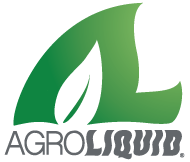
RECOGNIZED FOR their successful, exacting fertilizer application practices, Karl Dirks, Mount Joy, Pa.., Don Villwock of Edwardsport, Ind., and Lowell King of Loma, Colo., were honored as the 12th class of Responsible Nutrient Management Practitioners at the 2020 National No-Tillage Conference in St. Louis.
Sponsored by AgroLiquid and No-Till Farmer, below is a synopsis of each farmer’s fertilizer program.
Don Villwock, Edwardsport, Ind.
Based in Edwardsport, Ind., Don Villwock’s operation covers 3,500 acres, two-thirds of which are devoted to white corn and popcorn, with the remaining one-third in soybeans.
Typically, Villwock’s corn yields are more than 200 bushels per acre, while his county average is 185 — a difference he attributes to good stewardship and management of nutrients and topsoil.

“As no-tillers we pay extra attention to fertility and pH levels, and soil and tissue tests are critical,” says Villwock.
Most fields get a soil test every third year. And because numerous soil types are often present in one field, soil sampling is done by type and fields are managed by zone.
Soil tests and the nutrient test results of the turkey litter Villwock applies as a source of phosphorus (P) inform prescription maps for fertilizer applications.
On fields with non-erosive flat soils, Villwock broadcasts 0-0-60 potassium (K) in the fall. If additional P is needed, which is rare, he applies 18-46-0 at the same time. On highly erodible soils, all nutrients are broadcast just ahead of planting to minimize runoff.
For corn, Villwock applies anhydrous ammonia along with N-Serve pre-plant only on small patches, ends and point rows. At planting, corn and popcorn receive 10 gallons per acre of 32% nitrogen (N) as row starter, injected in a 2-by-2-inch configuration on each side of the row.
“As no-tillers we pay extra attention to fertility and pH levels, and soil and tissue tests are critical.” — Don Villwock
At around 6 inches of growth, all corn is sidedressed with anhydrous ammonia at 150-160 pounds per acre. If tissue tests show an N deficiency and yield prospects are good on irrigated fields, 32% N and sulfur are fertigated, as needed. These applications are typically split-applied into three applications throughout the season.
Dryland acres also receive 32% and sulfur, if tissue tests warrant. The application is dribble applied on both sides of the row with a Hagie sprayer that is equipped with Y drops.
Irrigation soil probes are also used to make sure that water isn’t over applied.
Improving Soils with Cover Crops
Villwock has been seeding cover crops for about 25 years. Typically he has about 1,000 acres of cover crops.
Villwock shares that the most gratifying aspect of no-till has been the progression of change he has seen on his land.
“What we’ve seen is an overall improvement in our soil health,” he says. “We have better water infiltration, improved drainage that you can see, and more earthworms — they are the ones doing our tilling today.”
Lowell King, Loma, Colo.
“The soil in Colorado is high salt and high pH. So when we started, we were farming just like everyone else in the Valley — moldboard plowing with fall tillage and furrow irrigation to supplement the 9 inches of annual rainfall,” says Lowell.
When the brothers purchased their first farm in 2009, they began to put into action some of the agronomic practices they had utilized in Pennsylvania. Being familiar with cover crops, the Kings began seeding rye after corn to provide winter forage for their cattle.
Maximizing ‘N’ Credits
Today, the brothers specialize in high-quality alfalfa and grass hay for the horse market, rotating fields between alfalfa, corn, a small grain crop such as wheat or oats and an Elbon rye cover crop.
In rotation, they plant 30-inch corn into alfalfa stubble or legume covers to maximize nitrogen (N) credit, and apply 5 gallons per acre of 7-17-3 in-furrow starter through Keeton seed firmers. At V6-V8, N is sidedressed and immediately covered with residue.
An additional application of 7-17-3 may be applied in July if they do a pass to spray for spider mites. A special sprayer pass is never done just to apply foliar fertilizer.
When planting corn into grass covers, the brothers apply 100-150 pounds per acre of urea at planting and sidedress additional N at V6-V7.
For winter wheat and rye, 250 pounds per acre of urea is watered in before spring green-up. Broadcasted urea is immediately covered with residue.
To minimize leaching and denitrification, the Kings use Agritain with liquid N at V6-V7 and N-Lock with dry N.
Keeping Inputs on Track
Soil samples are pulled on a 4-year rotation to ensure the operation’s nutrient levels stay on track in spite of not doing an annual 11-52-0 application — a standard practice for the area. Potassium is naturally high in their western soils and the Kings use cover crops to cycle phosphorus.
“In 2019, after our wheat harvest, we planted buckwheat to cycle phosphorus and sprayed it down before we planted alfalfa,” says Lowell.
Tests done in 2019 revealed the farms’ soil pH is around 7.6, comparable to other soils in the area. However, the improvements can be seen in the farms’ organic matter which has risen from 1.6-1.8% to 2.8-3.5%.
“On a normal corn crop, most guys are spreading around 200 pounds of nitrogen and plowing it in. We didn’t do that, and our tissue samples pulled at the beginning of the growing season and at silking registered sufficient,” says Lowell.
In 2019, the brothers recorded an average corn yield of 220 bushels per acre while the county average saw 183.
For some, the challenges of farming in a geography that receives only 9 inches of annual rainfall would limit opportunity and experimentation. For the Kings, however, the challenge has fueled their desire to learn more about the ways they can not only conserve, but preserve their most valuable investment: the soil.
Karl Dirks, Mount Joy, Pa.
“We started no-till farming for the reduction in work, primarily,” Dirks says. “But it didn’t take very long before our yields increased and we started to see the moisture and erosion savings that came with it.”
Managing ‘N’
Despite never using a starter N-P-K fertilizer package, in 2019, Farview Farms out-performed the county average by producing 240 bushel corn, 100 bushel wheat and 80 bushel soybeans.
Typically, Dirks applies 30-60 gallons per acre of 30% UAN at planting and through split applications during the critical uptake periods of corn and small grains. Sulfur is added only in a pre-emergence application.
For corn, Dirks injects 40 pounds of actual nitrogen (N) at planting, followed by 45 pounds per acre applied with pre-emergence herbicides. The remainder of the crop’s N needs are sidedressed when corn is knee-high using pre-determined rates based on credits taken from the legume cover crop and manure application for the field.
For the small grains that are grown before double-cropped beans, 30 pounds of N per acre is used if needed. Spring N is split-applied, with an early spring rate of 50 pounds per acre and a late spring application of 30 pounds per acre.
Plant and Soil Tests
Typically, Dirks samples half of all farmed acres annually to direct hog manure application and uses grid sampling to determine macronutrient availability. Dirks says that soil testing has improved profit returns.
“Soil testing has increased our yields through better potassium (K) and secondary nutrient management,” he says.
Manure from Dirks’ hog confinement operation is used to reduce the amount of K applied and currently replaces the need for commercial phosphorus (P). For the corn, wheat and soybeans Dirks grows, potash and kieserite are used to supplement the manure applications on an as-needed basis determined by soil testing.
“Some of our fields have a higher phosphorus load, so we pull soil samples on those fields every year to find the balance and make sure that we are maximizing yield potential,” Dirks says. “Since we started closely monitoring our phosphorus levels, we have decreased our phosphorus rates and increased our yields.”
Cover Crop Benefits
Dirks says the operation utilizes cover crops, typically small grains or a multispecies mix, on nearly 100% of farmed acres to cycle nutrients and hold topsoil in highly erodible fields.
“Since we began using cover crops, we’ve noticed that our water-holding capacity and infiltration have both increased,” Dirks says.
To get more details about these farmers’ fertility management programs and farming operations, click the button below. Also visit the Responsible Nutrient Management Practitioners page for further reading.
Read more on the fertility practices of the three winners >>







Post a comment
Report Abusive Comment